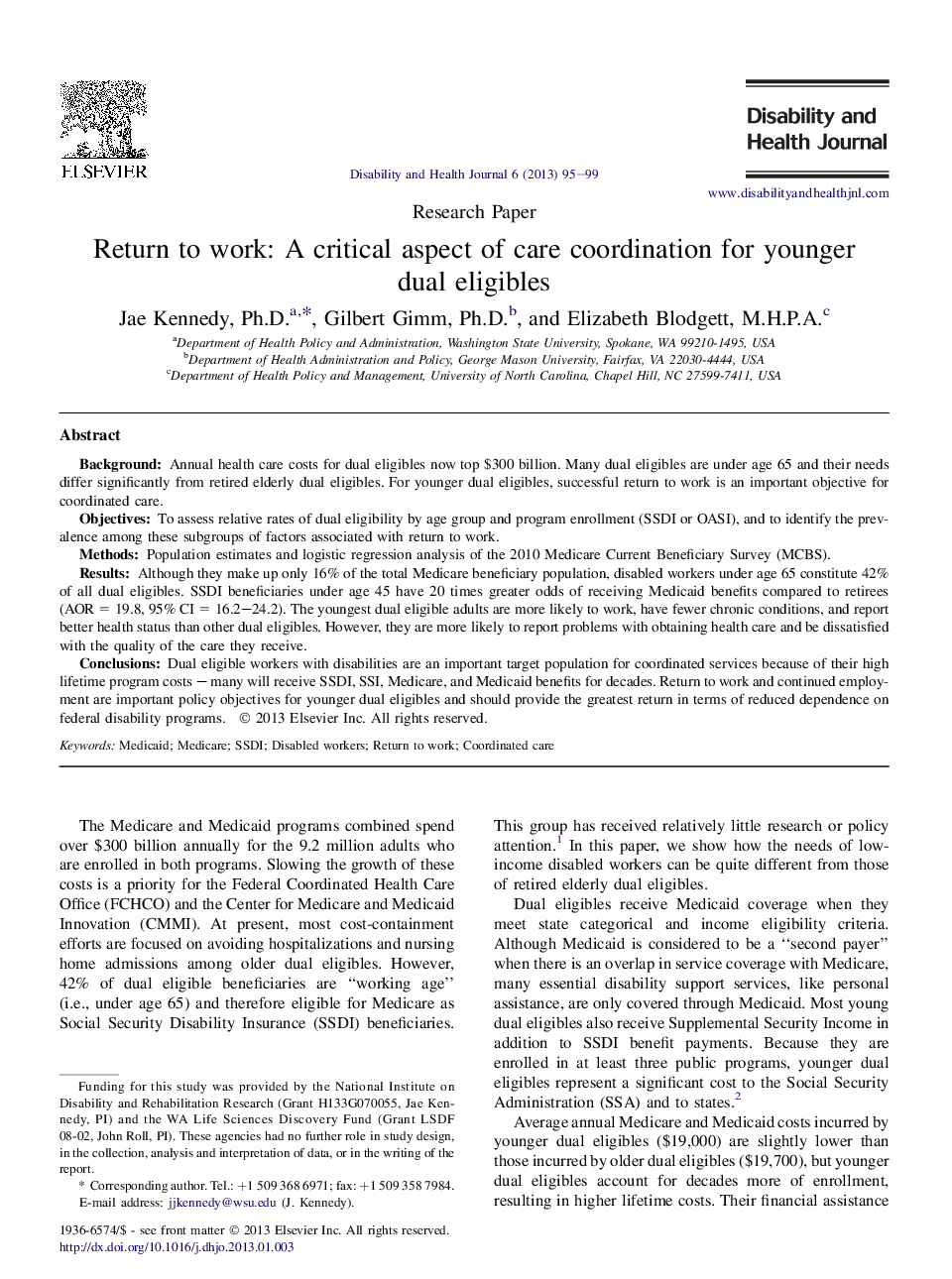| Article ID | Journal | Published Year | Pages | File Type |
|---|---|---|---|---|
| 4197500 | Disability and Health Journal | 2013 | 5 Pages |
BackgroundAnnual health care costs for dual eligibles now top $300 billion. Many dual eligibles are under age 65 and their needs differ significantly from retired elderly dual eligibles. For younger dual eligibles, successful return to work is an important objective for coordinated care.ObjectivesTo assess relative rates of dual eligibility by age group and program enrollment (SSDI or OASI), and to identify the prevalence among these subgroups of factors associated with return to work.MethodsPopulation estimates and logistic regression analysis of the 2010 Medicare Current Beneficiary Survey (MCBS).ResultsAlthough they make up only 16% of the total Medicare beneficiary population, disabled workers under age 65 constitute 42% of all dual eligibles. SSDI beneficiaries under age 45 have 20 times greater odds of receiving Medicaid benefits compared to retirees (AOR = 19.8, 95% CI = 16.2–24.2). The youngest dual eligible adults are more likely to work, have fewer chronic conditions, and report better health status than other dual eligibles. However, they are more likely to report problems with obtaining health care and be dissatisfied with the quality of the care they receive.ConclusionsDual eligible workers with disabilities are an important target population for coordinated services because of their high lifetime program costs – many will receive SSDI, SSI, Medicare, and Medicaid benefits for decades. Return to work and continued employment are important policy objectives for younger dual eligibles and should provide the greatest return in terms of reduced dependence on federal disability programs.
